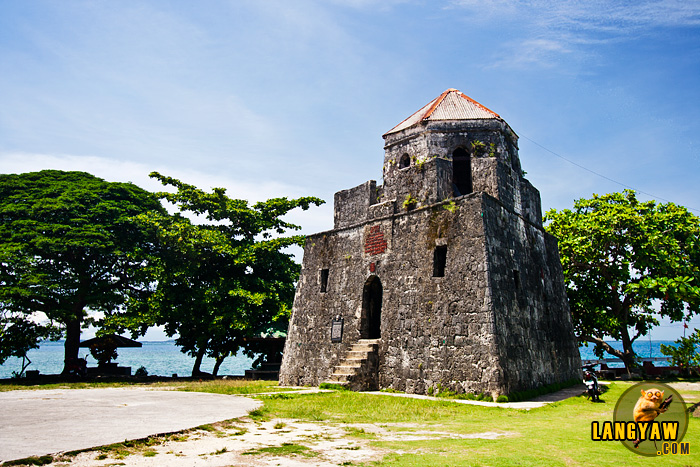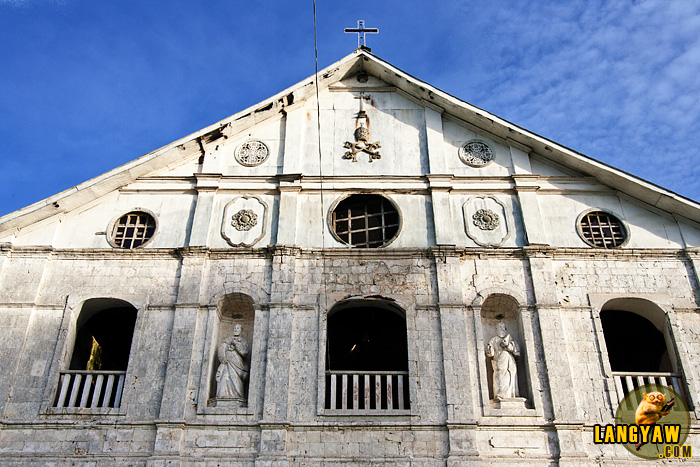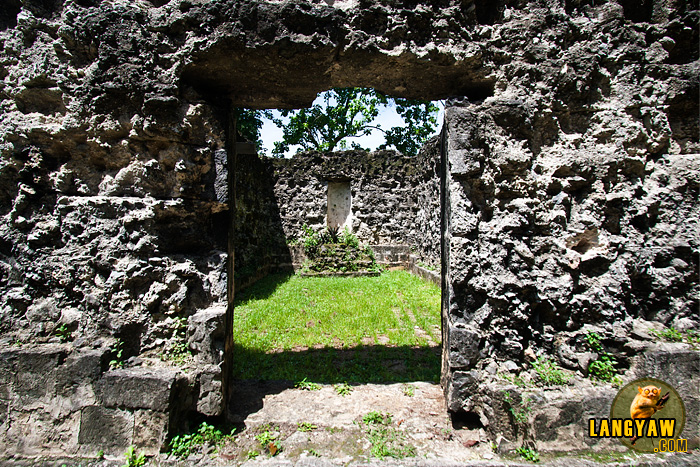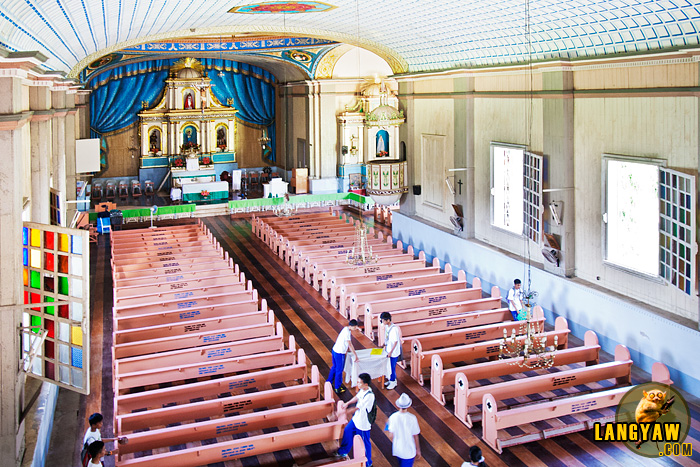
The island province of Bohol is not just Chocolate Hills, white beaches, and tarsiers. But most importantly, the still extant heritage structures are one of the province’s enduring legacies that mark the piety and religiousness of the Boholanos. While the old churches, especially that of Baclayon is probably one of the well known, if not the most famous of these structures, there are other interesting sites that are worth visiting but often overlooked.
Below are four heritage structures that are noteworthy but missed out by most tourists. Except for Loboc church, which most pass by enroute to the Chocolate Hills or limited to exterior shots while going down to the Loboc River for the cruise. The remaining three are mostly out of the established tourist trail.
PUNTACRUZ FORT, MARIBOJOC
The town of Maribojoc, 12 km from Tagbilaran City, hosts a beautiful watchtower that is the only perfect triangular fort in the country. Finished in 1796 and located 3 km from the town center, the Fuerte de San Vicente Ferrer or popularly known as Puntacruz, has been a lonely sentinel in this part of southern Bohol, guarding the lovely Bohol Sea from Muslim slave raiders that used to ply the seas during the amihan from the middle of the 18th to the middle of the 19th centuries.

THE LOBOC CHURCH
The parish church of St. Peter in Loboc is one of the oldest in the island. Built around the middle of the 17th century by the Jesuits, it’s one of the few but beautiful architecture built by the order. After their expulsion in the Philippines in 1768, the Augustinian Recollects took over and added to the construction of the church that includes the bell tower that is far from the church and the unique three story kumbento that is a rarity in the country. It has interesting decorative corbels and cornices in the form of mystical animals plus decorative bas reliefs and friezes.

ERMITA RUINS OF DIMIAO
The eerie ruins of an ermita or hermitage in the town of Dimiao has interesting empty honeycomb tombs is the only one of its kind in the country. Built by the Augustinian Recollect friar Enrique de Santo de Villanueva, it predates the beautiful coralline church located at its front. Located 40 km east of Tagbilaran City, it is often missed by tourists who prefer to go to the Chocolate Hills via Loboc. Both church and ermita were declared as National Cultural Treasures in 2011.

DUERO CHURCH
The neoclassic facade of the church of Duero is unassuming and simple that it is often passed over by travelers and tourists alike. But enter its hallowed interior and one will be surprised at what it has. The church is only one of three remaining religious structure in the country from the Spanish colonial period that has its wooden flooring intact. It is also the only extant structure that is generally made from wood, from the same period, that has survived. Beautiful dark and lighter colored wood planks as flooring makes for an interesting feature. The old retablos plus painstakingly painted walls rich with details add to the wonder.
Article originally published in the March 2013 edition of Zee Lifestyle, a Cebu based glossy magazine.
Bohol should also include these locations in their city tour.
I have been to Duero, its like mixing something old and new, really interesting, I agree, tourist torus should have included structures like these. Sometimes they hold more mysteries than the well known ones. =)
Unfortunately, they’re only relying on the usual spots.
Estan
True. I was checking other travel blogs as well and saw not just one but a few more spots in Bohol that deserves attention. If they can provide options to tourists, then Bohol City Tour won’t be a just one time deal.
Hi estan. Beautiful photos and interesting contents as usual. The next time you visit Bohol, you might want to check out the church in Valencia. Not so much on the outside, but I think you would be interested in the wooden floors with herringbone and 8-point flower patterns, which in my opinion is much more interesting than Duero church’s flooring.
Check out this blog (not mine) for the photos
http://www.thepinoyexplorer.com/2012/08/bohol-valencias-sto-nino-church.html?m=1
Hi Ed,
Yes, I’m quite familiar with the Valencia church and have in fact have photos of the interior.